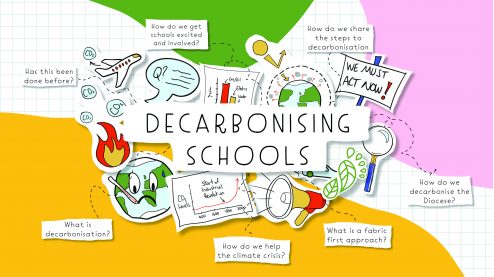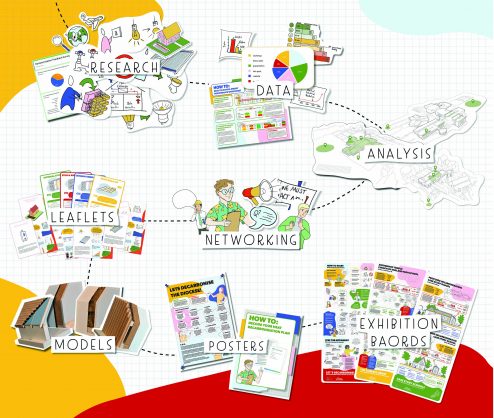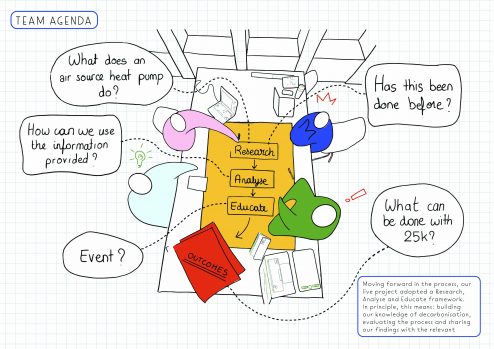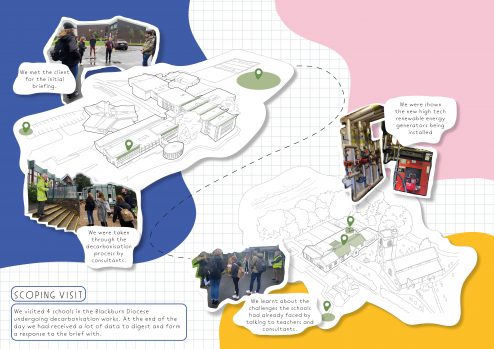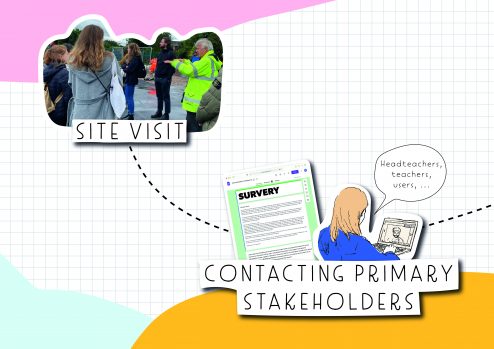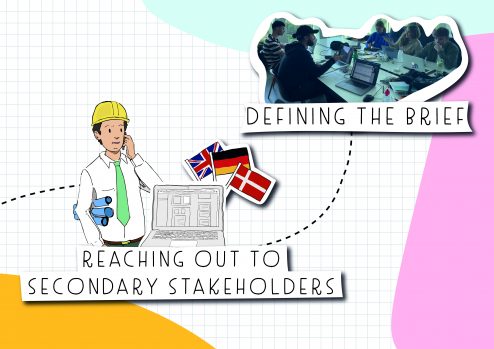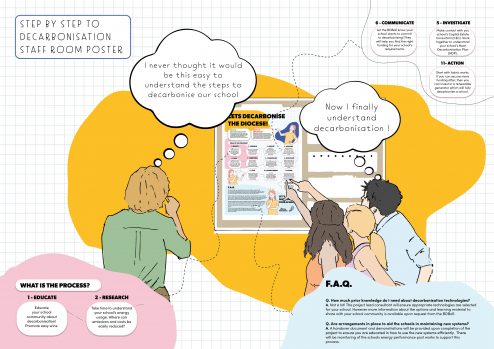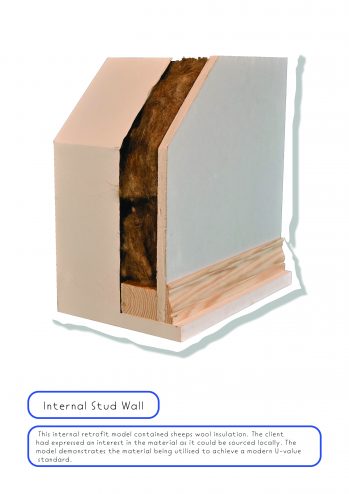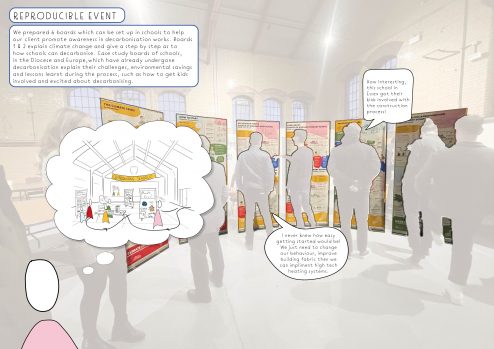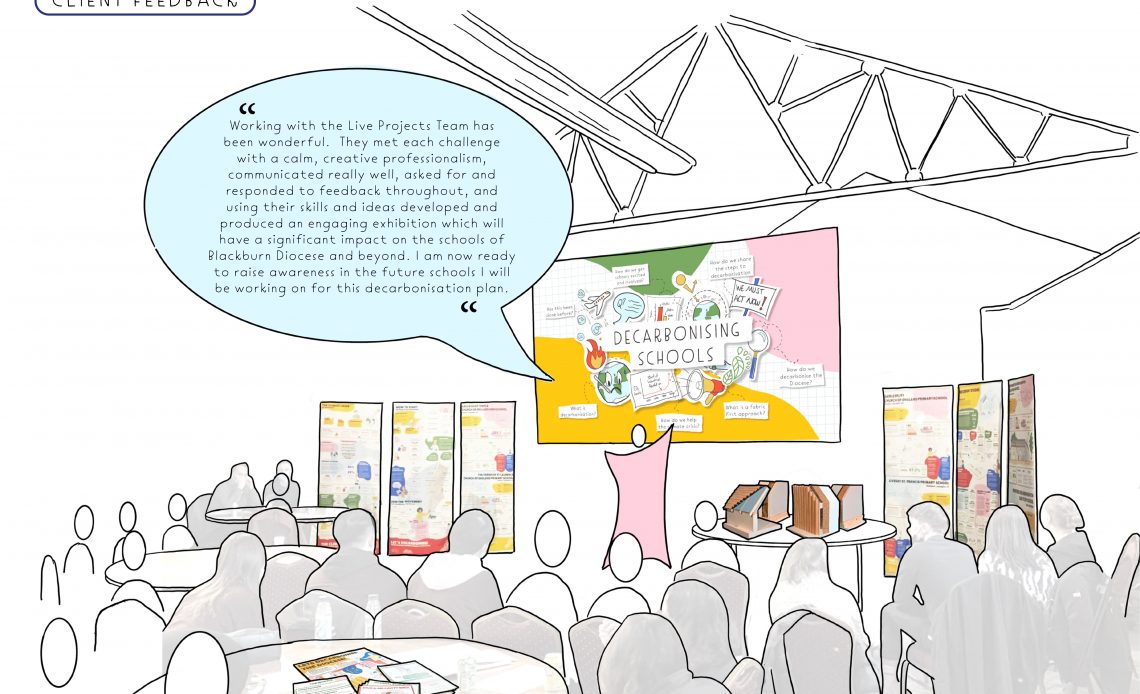
Year | 2021
Location | Blackburn, Lancashire, UK
Clients | Blackburn Diocesan Board of Education
By 2050, the UK government is legally obliged to end its contribution to global warming. However, 80% of buildings that will exist in 2050 have already been built. Buildings contribute to 40% of UK carbon emissions, which means we need to decarbonise our existing building stock. Decarbonisation is the process of reducing carbon emissions in existing buildings. The Blackburn Diocesan Board of Education recently concluded decarbonisation work on 4 of its schools; they called on us to critically reflect on the project so far and propose new routes forward. A decarbonisation plan details ways to: firstly, reduce heat loss through the building fabric; secondly, reduce day to day energy consumption; and finally, use renewables instead of fossil fuels. The government funding cycles created strict time frames and we found that many teachers are unsure about who to talk to; what technologies are being used; and what it will mean for the running of the school.
Using the knowledge and experience gained from the decarbonisation process, we wanted to set out a route for the diocese to decarbonise on its own terms. We wanted to make the process as inclusive and accessible as possible. A ground-up decarbonisation movement, without strict timeframes and restrictions. An opportunity to empower teachers to understand and pursue decarbonisation. Encouraging a culture shift in schools towards a zero-carbon future.
We put together 3 packages to help make this happen.
The first was the exhibition package, for a touring exhibition to take around schools in the diocese. This has the aim of building excitement and understanding around decarbonisation.
The second was the school package, a series of resources to support teachers in implementing decarbonisation into their curriculum. This includes interactive card games; summary leaflets of technologies; and information on how to read and understand a decarbonisation plan.
The final package was the client package. This includes a range of information, consolidating the decarbonisation process so far and clearing up confusion. This included a stakeholder feedback document, an annotated energy spreadsheet and an A3 poster on how to pursue decarbonisation with the diocese.
This series of outputs seeks to create a more informed conversation around decarbonisation in schools. It also strives to create a more accessible conversation, by providing digestible content and empowering teachers through understanding. Finally, it broadens the conversation, spreading the knowledge learnt so far to inform the global movement towards decarbonisation.
Credits:
Mentor: John Sampson
Client: Sam Johnson, Blackburn Diocesan Board of Education
Location: Blackburn, Lancashire, UK
Students: Elle Thompson, Sijia Chen, Joe Bayley, Sam Warriner, Diandian Wang, Laith Samin, Dingkun (Dustin) Song, Polly Amery, Charlotte Ward, Zhiquan Li, Charlie Harris, Irene D’Aurelio D’Arpino, Sujan Shilpakar, Colombine Vaillaud

